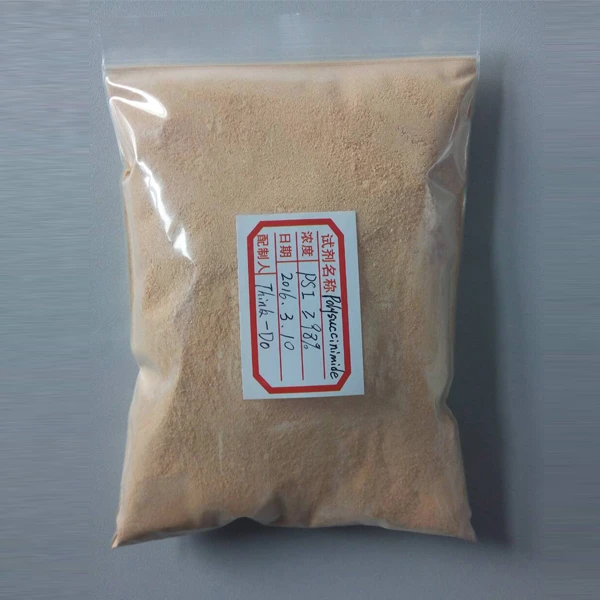
News
Ara . 20, 2024 18:42 Back to list
custom polyaspartic acid hydrogel
Custom Polyaspartic Acid Hydrogel A Versatile Biomaterial
In recent years, synthetic hydrogels have attracted significant attention in the fields of biomedicine, drug delivery, and tissue engineering due to their unique properties, such as high water content, flexibility, and biocompatibility. Among these, polyaspartic acid (PA) hydrogels have emerged as a prominent candidate due to their versatile functional attributes. This article delves into custom polyaspartic acid hydrogels, exploring their composition, synthesis methods, and applications in various fields.
What is Polyaspartic Acid?
Polyaspartic acid is a biodegradable polymer derived from aspartic acid through a polycondensation process. It is characterized by its amino acid backbone, which confers a range of properties suitable for creating hydrogels. The hydrophilic nature of polyaspartic acid enables these hydrogels to retain significant amounts of water, creating a gel-like structure that mimics the extracellular matrix found in biological tissues. This property is crucial for applications in tissue engineering, where support for cell growth and functionality is necessary.
Characteristics of Custom Polyaspartic Acid Hydrogels
Custom polyaspartic acid hydrogels can be designed to exhibit specific mechanical, chemical, and physical properties depending on their intended application. The customization can involve altering the molecular weight of the polymer, the cross-linking density, and the incorporation of various functional groups. Furthermore, by integrating bioactive compounds and peptides within the hydrogel matrix, researchers can enhance cell adhesion, proliferation, and differentiation, creating a favorable environment for tissue regeneration.
One of the notable features of these hydrogels is their tunability. By adjusting the synthesis conditions and the ratio of reactants, scientists can fabricate hydrogels with varying mechanical strength, swelling behavior, and degradation rates. This versatility allows for tailored hydrogels suitable for specific applications, whether in wound healing, drug delivery systems, or scaffolds for tissue engineering.
Synthesis Methods
custom polyaspartic acid hydrogel

The synthesis of custom polyaspartic acid hydrogels involves several methodologies, including physical and chemical cross-linking. Chemical cross-linking is achieved through various reactions, such as Michael addition or click chemistry, which help create stable networks within the hydrogel. Physical cross-linking can involve hydrogen bonding, ionic interactions, or hydrophobic forces, allowing for a more straightforward preparation process without the need for toxic cross-linking agents.
A common approach to creating polyaspartic acid hydrogels is through the use of multifunctional cross-linkers and adjusting the polymer concentration. These methods can be fine-tuned to yield hydrogels with desired pore sizes and properties, crucial for controlling nutrient diffusion and cellular infiltration in tissue engineering applications.
Applications of Custom Polyaspartic Acid Hydrogels
The applications of custom polyaspartic acid hydrogels are vast and varied. In the medical field, they are increasingly being utilized in drug delivery systems, where their ability to swell and retain drugs allows for controlled release profiles. Additionally, their biocompatibility makes them excellent candidates for wound dressings, facilitating healing while providing a moist environment.
In tissue engineering, these hydrogels serve as scaffolds for cell growth, supporting the formation of new tissues. They are particularly advantageous in cartilage and bone tissue engineering, as they can mimic the mechanical properties and biochemistry of natural tissues. Furthermore, when embedded with growth factors or stem cells, they enhance regeneration capabilities.
Conclusion
Custom polyaspartic acid hydrogels represent a promising avenue in the development of next-generation biomaterials. With their tunable properties, biodegradability, and biocompatibility, they offer unique solutions for challenges in drug delivery, wound healing, and tissue engineering. As research continues into optimizing their functionalities, these hydrogels stand to make a significant impact in the biomedical industry, paving the way for innovative therapies and improved patient outcomes. The integration of advanced technologies in the synthesis and application of polyaspartic acid hydrogels will likely accelerate their utilization in clinical settings, heralding a new era of therapeutic possibilities.
-
OEM Chelating Agent Preservative Supplier & Manufacturer High-Quality Customized Solutions
NewsJul.08,2025
-
OEM Potassium Chelating Agent Manufacturer - Custom Potassium Oxalate & Citrate Solutions
NewsJul.08,2025
-
OEM Pentasodium DTPA Chelating Agent Supplier & Manufacturer High Purity & Cost-Effective Solutions
NewsJul.08,2025
-
High-Efficiency Chelated Trace Elements Fertilizer Bulk Supplier & Manufacturer Quotes
NewsJul.07,2025
-
High Quality K Formation for a Chelating Agent – Reliable Manufacturer & Supplier
NewsJul.07,2025
-
Best Chelated Iron Supplement for Plants Reliable Chelated Iron Fertilizer Supplier & Price
NewsJul.06,2025
